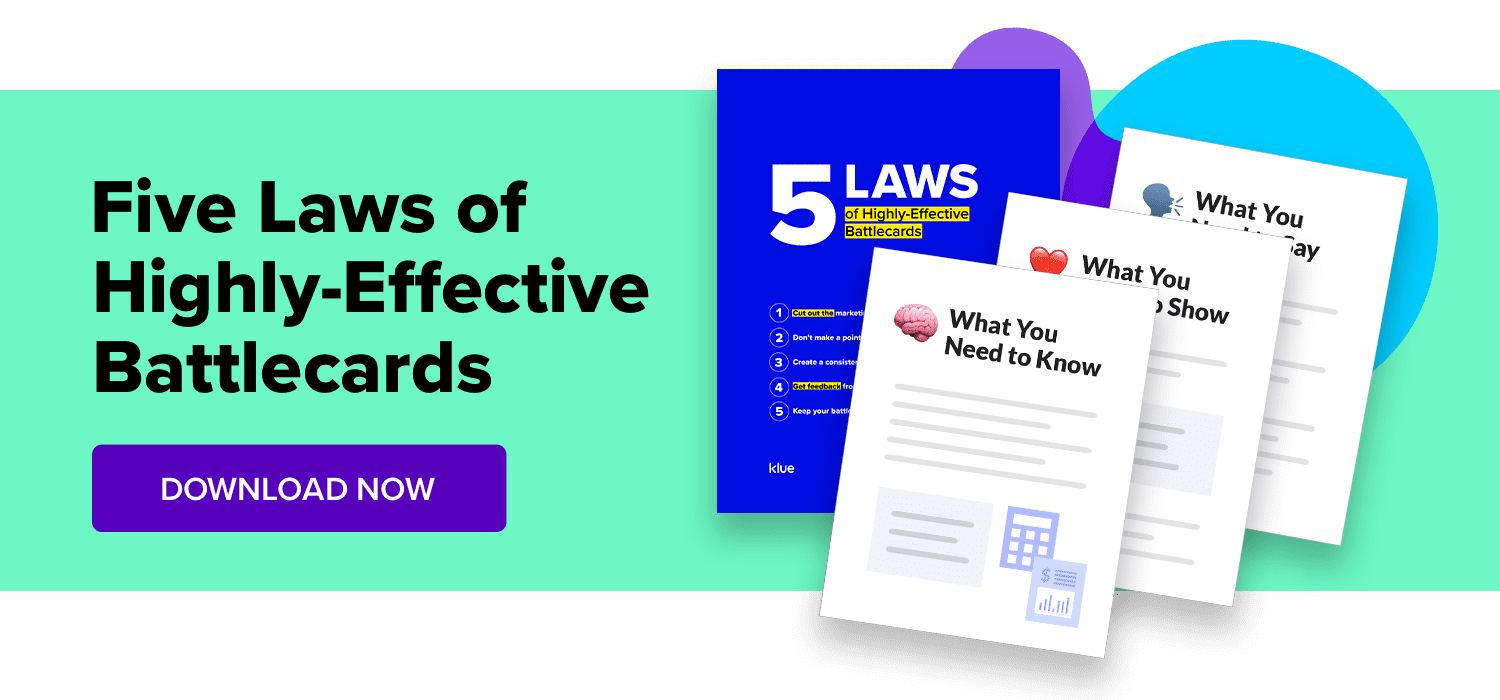Klue Compete
The Competitive Enablement Platform
Learn More
FIND OUT MORE >

There is no moment that creates panic quite like losing your house keys.
My heart rate will triple as I frantically flip couch cushions, make an estimated 27 trips back and forth to my car, and desperately fling open cupboards that haven’t been touched in over a year.
I’ll even retrace my footsteps like a detective assessing a crime scene until… that recognizable jingle in my pocket.
A jingle which is quickly accompanied by the facepalming realization of ‘why didn’t I just check my pockets in the first place?!’.
This scenario is not unlike the way many businesses attempt to find competitive intelligence. They spend time and resources scraping every corner of the internet, digging through PDFs and blog posts.
In reality, much like your house keys, the best competitive intel actually lies within the four virtual walls of your organization. Your sales team and internal experts are your best source of competitive intelligence.
Here’s how to tap into them.
Select the right people to interview so that your time is used most effectively. Ask or look for salespeople with the most experience at your company and/or in your industry.
Most content curators only need to conduct 3 or 4 x 30 min interviews initially, to cover major competitors for a product line.
Here are 5 things that you need to know before begin approaching your sales team:
Here are 5 things that we’ve learned to do to get effective intel from your revenue teams:
You need to provide quick wins and address low-hanging fruit for your sellers. That’s why they’re a great source for helping you to prioritize what content and competitors you should focus on first.
If you’re looking to focus on content prioritization, seller confidence, and identifying knowledge gaps, then use our Competitive Confidence Survey Template.
Now we’re going to dive into questions you should ask in order to fill out specific battlecards. If you’re starting from scratch and looking for some sales battlecard templates to build from, then check out our templates below.
If you’ve already got your cards ready, then read on for the questions you can ask to get intel for each.


Note: Objection Handling = your team’s re-frame of a competitor’s strengths.
As you’re conducting these interviews, you’ll start noticing common themes.
These commonalities are where you should look to help you build your battlecards using the internal intel you’ve collected.
With the right content, and the right structure (like our Know. Say. Show. framework) you’ll have everything you need to build a winning sales battlecard.




Competitive Enablement
The topic of Large Language Models (LLMs) has a lot of confusion. Here's what you need to know about how Klue is working with them.


Competitive Enablement
Product Marketing
If your competitive intel game is too strong for automation, too pure for data privacy, and too rebellious for accuracy — then Klue AI is probably not for you.


Let’s do it. Tell us a bit about yourself and we’ll set up a time to wow you.
Let's do it. Tell us a bit about yourself and we'll set up a time to wow you.
XLet's do it. Tell us a bit about yourself and we'll set up a time to wow you.
XSubscribe to get our latest AI functionality and news in your inbox.
XOur Buyer Pulse feature, set to launch in Q2 2024, offers valuable insights into the factors influencing buyer decisions in your pipeline. By signing up for the waitlist, we can better gauge interest and proactively engage with you to streamline the setup and integration process before the feature becomes widely available.
X